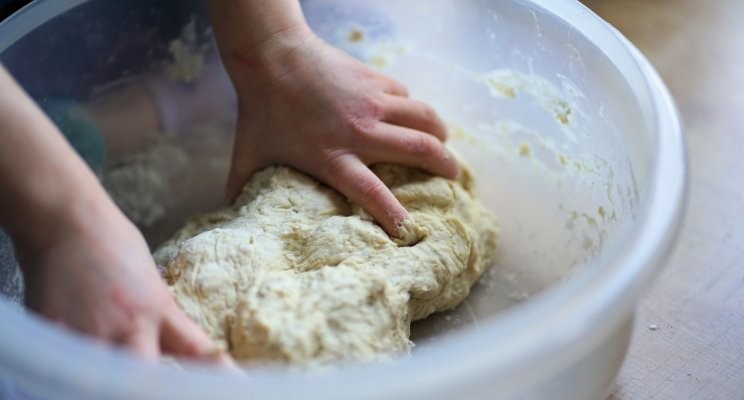
When we’re handling food, we may pay special attention to expiry dates on dairy products and practice safe handling with meat, but the recent recall of Robin Hood flour...
The holidays are quickly approaching, bringing with them traditional gatherings with family and friends featuring the usual holiday foods. For those responsible for meal preparation around the holidays, it’s important to know what foods pose potential food safety problems and how to handle them safely. Knowing the five problem foods will help you avoid a food poisoning nightmare scenario this holiday season.
Turkey is one of the most universally beloved holiday proteins, but its long preparation time leaves a lot of room for contamination. The first step in turkey prep is to ensure that your bird has been safely thawed. This is best done on the bottom shelf of the refrigerator, so the bird does not drip on other food. Allow 10 hours of thawing time per kg (5 hour per pound). Thawing your turkey on the counter at room temperature is not safe, as bacteria can begin to grow rapidly when the turkey reaches the “danger zone” of 4-60 degrees Celsius (40-140 Fahrenheit).
If you must cook stuffing in the turkey (not recommended), it’s important to insert it just before you begin cooking, and to use a food thermometer to cook the stuffing to 74 Celsius (165 Fahrenheit), to reduce the bacteria to a safe level. Cooking time for your turkey will vary, but it’s important to cook the turkey in the oven at a temperature of no lower than 177 Celsius (350 Fahrenheit). It’s important to use a thermometer when preparing your holiday turkey - the internal reading should be at least 82 degrees Celsius (180 Fahrenheit) when cooking is finished.
When preparing dishes with milk or cheese, it’s important to keep these foods cold at all times. Keeping them at room temperature for longer than necessary leaves room for bacteria to grow rapidly, quickly spoiling dairy products. Certain types of cheese - mozzarella and ricotta among others - require constant refrigeration. Using pasteurized milk and cheese when cooking will help to eliminate risk, as will checking for visible molds and serving foods at recommended temperatures. Cheese trays should not be left out for more than two hours at most, and shouldn’t contain mozzarella or soft cheeses unless you have a method of keeping them chilled.
While eggnog may be one of the more divisive beverages around, it has cemented itself as a holiday staple in many areas. The creamy drink brings with it a risk of contracting salmonellosis, especially when prepared at home. It’s important to use only pasteurized eggs when preparing eggnog. Even when adding alcohol to your eggnog, it’s important to take the proper precautions to completely cut your risk of illness - alcohol will not kill all bacteria.
This popular holiday side dish comes in many different forms, and brings with it a risk of foodborne illness. Cooked potatoes are prone to growth of bacteria, like any food that requires time and temperature control for safety. When prepared hot, potatoes should have an internal temperature of over 60 degrees Celsius (140 Fahrenheit), and should not be left at room temperature for over two hours. Proper cooling of cooked potatoes is vital when combining them with mayonnaise or oils - the two-stage cooling method is a surefire way to avoid salmonella and listeria.
Only pasteurized eggs should be used in any dishes or desserts prepared with raw eggs, as salmonella and other harmful bacteria can be present. No matter how delicious your cookie dough or cake batter looks before baking, raw dough or batter containing eggs or flour should not be ingested as they carry a risk of E. coli and salmonella - it’s especially important to keep these rules in mind when children are present in the kitchen.
Being mindful of food safety rules around the holidays is a great way to ensure that your get-together with family and friends goes off without a hitch. Keep in mind other important rules like hand washing, cleaning and sanitizing surfaces and any utensils that come into contact with food, and storing leftovers correctly. Food Safety Market wishes all readers a safe and happy holiday.
For more information about the online and in-class food safety training offered by the experts at Food Safety Market, visit the enroll page here.

When we’re handling food, we may pay special attention to expiry dates on dairy products and practice safe handling with meat, but the recent recall of Robin Hood flour...

For some restaurant workers, serving is a summer job. But what if your new hires show promise and you want to keep them year-round?
Enticing staff to stay isn’t just...